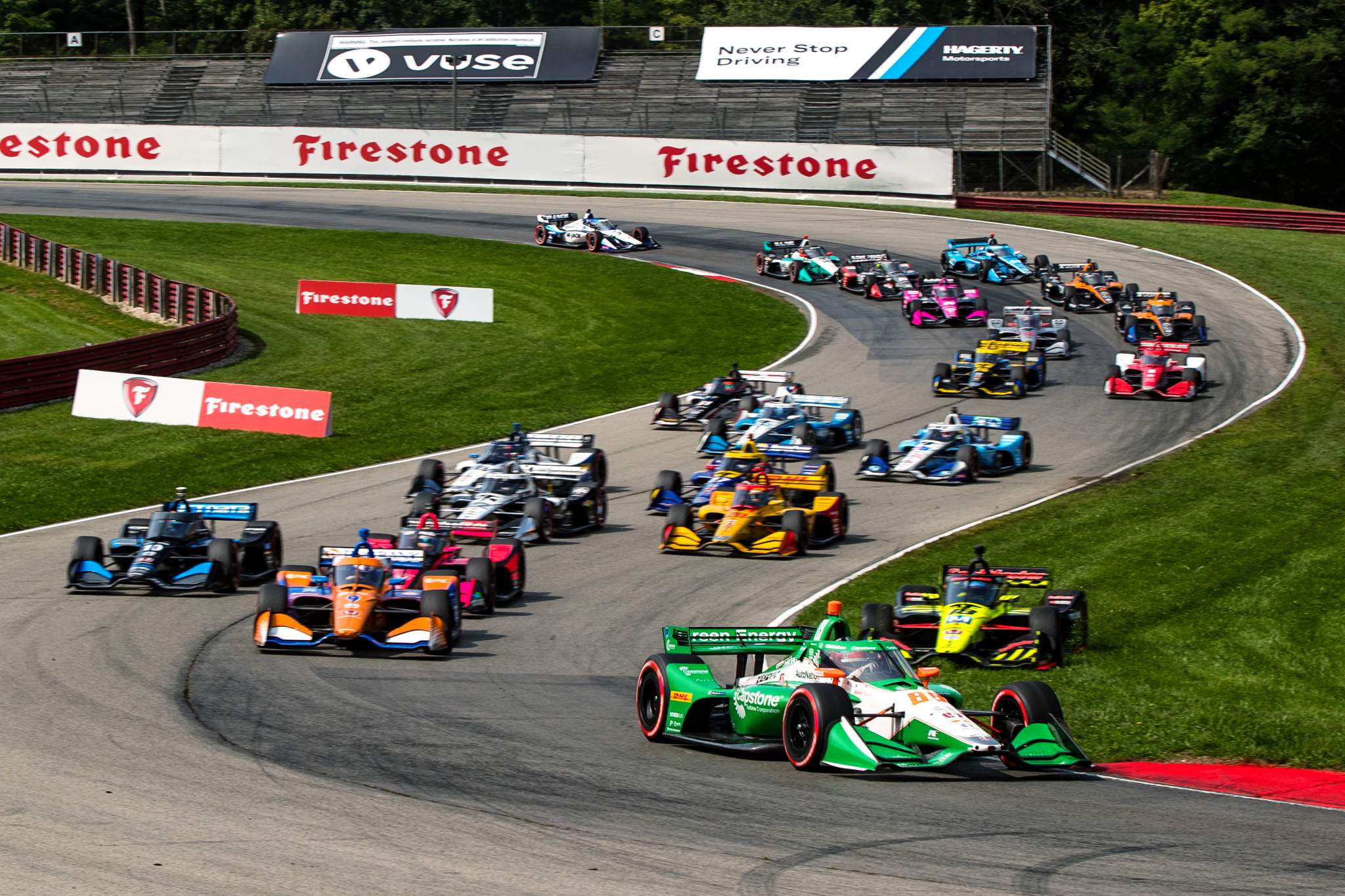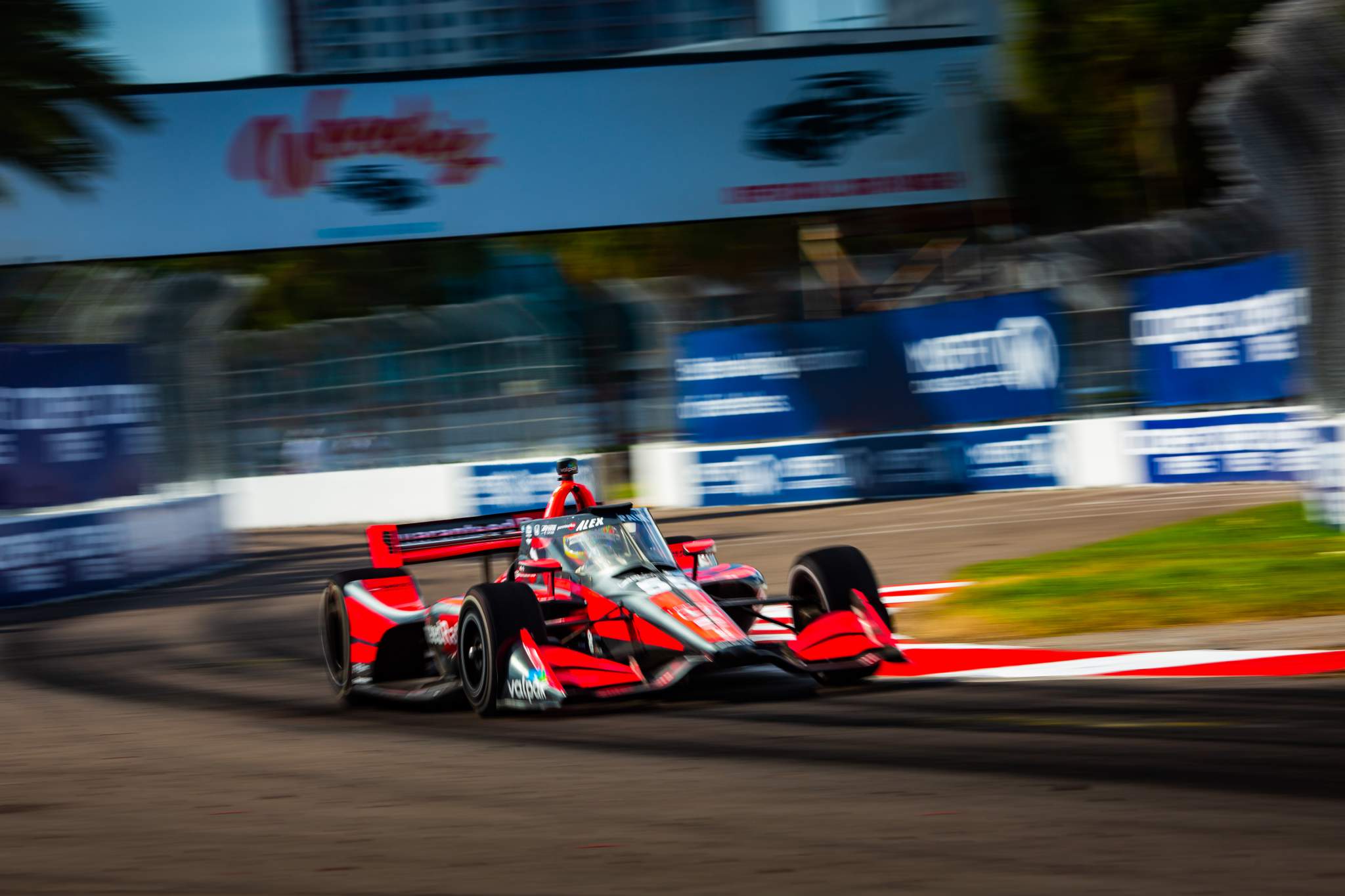In the days after Romain Grosjean stepped out of that Bahrain Grand Prix fireball, it seemed too tasteless a question to ask or even really think about.
He’d just escaped a truly hideous crash that contained multiple elements that could have been fatal, and he’d reflected with heart-rending candour on how that made him feel about his own mortality and the effect of the incident on his family.
‘Do you still fancy IndyCar then?’ was not the question to pursue.

Safety is always an underlying, sometimes unspoken, element in the wider motorsport world’s discussion of IndyCar.
When drivers on the way out of Formula 1 are asked if they would consider IndyCar, the topic of oval racing comes up as an immediate adjunct – and is often met with a wince, or even a frank declaration that they wouldn’t put their family through it.
Or that’s implied by the type of programme discussed. Jenson Button’s Arrow McLaren SP adventure would’ve been road and street course only. Even seven-time NASCAR champion Jimmie Johnson isn’t tackling ovals in a single-seater in his Ganassi deal.
Yet now, a month and a half after Grosjean escaped from that crash, the potential for him to secure a full-time 2021 IndyCar seat, ovals and all, is firmly back in the news. Indianapolis Star journalist Curt Cavin – whose sources are on the money more often than not – suggested on his podcast that Grosjean was firmly in line for a Dale Coyne Racing drive.
With that still far from official, it’s not yet the time to fully analyse Grosjean’s chances of adapting successfully or Coyne’s suitability for his switch.
But the possibility that Grosjean is still aiming for IndyCar does mean we have to confront the question over whether he’s right to.
And a big part of that is assessing whether it’s fair that IndyCar oval racing still prompts winces from many in the F1 orbit.
The deaths of Dan Wheldon and Justin Wilson are still painfully fresh in the memory. Robert Wickens’ life-changing Pocono crash even more recent.
It’s a fact that the nature of racing open-wheel cars on an oval creates more jeopardy than racing them on a road or street course. The speeds, the consequences of a touch of wheels, the proximity of the walls (even the ones with SAFER barriers) and the effect of hitting the fence are all too clear.
The consequences of Scott Dixon’s 2017 Indianapolis 500 crash if his flying car’s trajectory had been a little different are hideous to imagine. On a much smaller but certainly not insignificant level, Oliver Askew’s heavy Indy 500 crash this year left him concussed. And his wasn’t that race’s only big impact.

But IndyCar is hardly complacent. It doesn’t shirk its responsibility to go above and beyond on safety; it’s aware that the oval leg of its calendar makes that essential.
Justin Wilson’s brother Stefan’s words to my colleague Jack Benyon last year about how he felt watching drivers have crashes at Iowa Speedway that could’ve had awful consequences pre-aeroscreen were extremely poignant. And Stefan has continued to pursue IndyCar oval drives too. He does not see it as an unsafe championship and his opinion – for tragic reasons – carries a lot of weight.
No lesson from an IndyCar crash is wasted. Yes, its oval races create more potential danger than other types of racing. That doesn’t make them dangerous. The side of the debate that will see a Grosjean IndyCar move as walking out of a rare near-fatal F1 crash to race in a series where he’s much more likely to have a near-fatal crash isn’t fair.
All motorsport carries risk. In 2020 F1, at a very modern circuit, Grosjean’s car pierced through a barrier, became wedged by the cockpit, and exploded. Grosjean would’ve raced at that circuit again seven days later had he been fit enough. As far as we know, that crash has not dissuaded anyone from targeting F1.
I’m far from 100% in my own personal opinion on this. Perhaps wrongly, because Grosjean has had the experience of a miracle escape and we’ve all had the unpleasant opportunity of imagining what his family could’ve had to cope with and the future life he would’ve missed out on, I’m far more anxious about his future safety than I would be about a driver who hadn’t been through that experience. It really shouldn’t make a difference.
And I cannot help but love the thought of what Grosjean could achieve in IndyCar given his racing spirit. And I can’t shake the feeling there’s an injustice to be righted.
Grosjean deserves for that fireball to not be the way his career ended.
He wanted one more F1 race at least, he may still get a farewell F1 test, a successful new career in another top-line single-seater series would be even better. The fairytale is too tempting.
If he and his family are still up for the IndyCar move, that’s a tribute to their collective bravery and strength of character. There will be reservations from outsiders – some understandable, some not truly logical – but that will be dwarfed by the amount of goodwill. Having the image of Grosjean stepping onto an IndyCar podium to counterbalance the image of him stepping out of an F1 fireball is just too tantalising.
Whatever he is aiming to do next, he emphatically deserves a shot at it. And for it to be successful, enjoyable, and safe.







